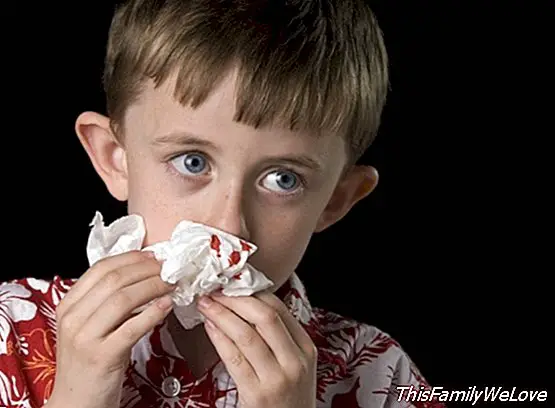Nasal hemorrhages, how to act before them

There is nothing more to scare a father than to see blood near his son, and if it leaves his body it is cause for concern. One of the most common hemorrhages in children is the one that flows from the nose and that can occur with actions as simple as scratching the nostrils. However, the reddish color of this liquid causes us to put on the emergency pilot, and it is not for minors since as in any matter of this type, acting quickly is the key.
Why is it bleeding from the nose
Bleeding from the nose is very common among children, as indicated by the Spanish Association of Pediatrics, AEP, which explains that at least one in ten children have gone through this hemorrhage at least once. Especially the group of minors that has an age between two and ten years. In adolescents it is less common to attend one of these episodes.
These hemorrhages occur for many reasons, from a hard blow to the mere scratching of the nose. This is related to the large number of blood vessels that are present in the nasal septum and that are so close to the surface that they can break With these simple actions, there are cases in which a cold has caused bleeding.
What to do in the face of bleeding
When a father sees blood coming out of his son's nose it is very easy to lose his calm. But the first thing to do is to maintain the composure so that the child does not get upset, the main thing is to get it to maintain the tranquility that the adults take away by getting nervous seeing the hemorrhage. Pediatricians say that usually there is not much risk in these cases, although it is convenient to cut the bleeding as soon as possible.
To cut the bleeding the simplest and most effective maneuver, according to the pediatricians, is to tighten the nose with the index finger and thumb making a clamp. This can be practiced with the child sitting or standing, with the head in the usual position, specialists remember that it is not necessary to throw it back as it is commonly said.
The clamp can be maintained in a period of time ranging from 5 to 30 minutes. The limit should be the end of the bleeding, it is important to keep tightening to check if the child continues bleeding. It is better to wait a few minutes after you stop bleeding to remove them. If after that time the bleeding has not subsided, it is advisable to seek healthcare.
You can also introduce cotton or gauze soaked in hydrogen peroxide to cut the bleeding. When using any of these elements, they should never be left on the nose and should not be left inside for more than a couple of days. If the child finally needs to be seen by a doctor, inform the person who deals with the child of the presence of this plug in the nostril.
Damián Montero




